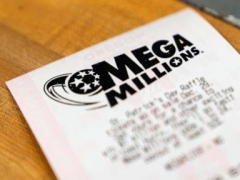Remember this moment because it probably won’t last: A U.S. lottery jackpot soared above $1 billion, and that’s still a big deal.
After three months without anyone winning the top prize, a ticket worth an estimated $1.22 billion was sold in California for the drawing Friday night. The high number evoked headlines and likely lured more people to convenience stores with dreams of private spacewalks above the Earth.
It doesn’t seem to matter that the nation’s top 10 jackpots, not including Friday, already boasted 10-figure payouts. For many of us, something stirs inside when a number ticks one dollar above $999,999,999.
“The question lurking is, what happens when $1 billion becomes routine and people don’t care about it anymore?” said Jonathan D. Cohen, author of the 2022 book “For a Dollar and a Dream: State Lotteries in Modern America.”
“There’s no easy round number after a billion,” Cohen said. “But also, how much money can one person possibly, possibly, possibly need?”
Mega Millions ticket prices are set to rise from $2 to $5 in April. The increase will be one of many changes that officials say will result in improved jackpot odds, more frequent giant prizes and even larger payouts.
Here’s brief history of lotteries and why jackpots are growing:
Cohen notes in his book that lotteries have existed in one form or another for more than 4,000 years.
In Rome, emperors and nobles held drawings at dinner parties and awarded prizes that ranged from terra cotta vases to people who were enslaved. As early as the 1400s, lotteries were used in Europe to fund city defenses and other public works.
Sweepstakes were common in the American colonies, helping to pay for the revolution against Britain. Cohen noted in his book that Thomas Jefferson approved of lotteries, writing that they were a tax “laid on the willing only.”
Lotteries began to fall out of favor in the U.S. in the 1800s because of concerns over fraud, mismanagement and impacts on poor people. But starting in the 1960s, states began to legalize them to help address financial shortfalls without raising taxes.
“Lotteries were seen as budgetary miracles, the chance for states to make revenue appear seemingly out of thin air,” Cohen wrote.
When Mega Millions started in 1996, it was called “The Big Game” and involved only six states. It was meant to compete with Powerball, which then had 20 states and the Dist





